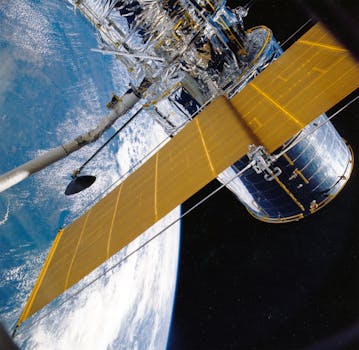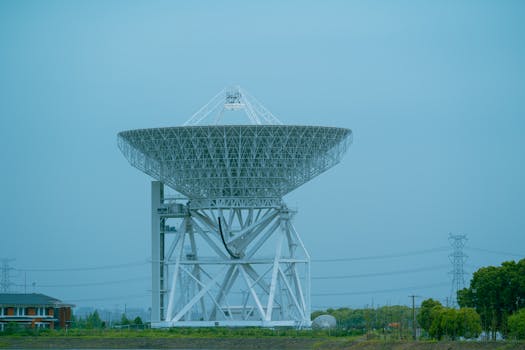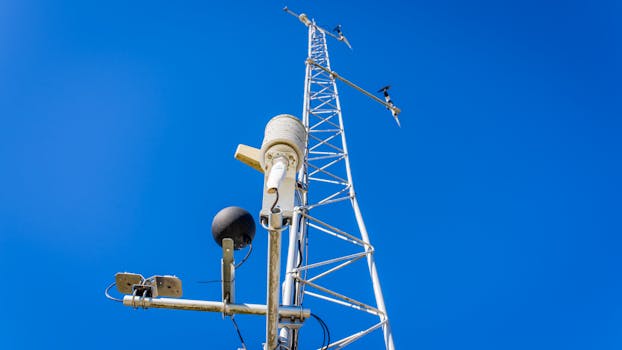
Navigating the Skies: Insights into Recent Satellite Telecommunications Innovations
Navigating the Skies: Insights into Recent Satellite Telecommunications Innovations have been transforming the way we communicate, with recent innovations enabling faster, more reliable, and more widespread connectivity. Satellite telecommunications have come a long way since the launch of the first commercial communications satellite, Intelsat 1, in 1965. Today, satellite telecommunications play a vital role in connecting remote and underserved communities, providing critical communications infrastructure for emergency response and disaster recovery, and enabling global communications for businesses and individuals alike.
Satellite telecommunications innovations are driven by advances in technology, including the development of new satellite constellations, such as OneWeb and SpaceX’s Starlink, which are designed to provide low-latency, high-speed internet connectivity to underserved communities around the world. These constellations are made up of hundreds or even thousands of small satellites that work together to provide seamless coverage and connectivity. Other innovations, such as the use of advanced materials and manufacturing techniques, are enabling the production of smaller, lighter, and more efficient satellites that can be launched at lower cost and with greater frequency.
Advances in Satellite Technology

Recent advances in satellite technology have been driven by the need for faster, more reliable, and more secure communications. One of the key innovations in satellite technology is the development of high-throughput satellites (HTS), which use advanced spot beam technology to provide higher speeds and greater capacity than traditional satellites. HTS satellites are designed to provide high-speed internet connectivity to a wide range of users, from consumers and businesses to governments and institutions. Another key innovation is the development of satellite-based internet of things (IoT) connectivity, which enables the connection of millions of devices, from sensors and trackers to smart home devices and industrial equipment.
The use of artificial intelligence (AI) and machine learning (ML) is also transforming the satellite telecommunications industry. AI and ML are being used to optimize satellite operations, predict and prevent outages, and improve the overall efficiency and reliability of satellite communications. For example, AI-powered systems can analyze traffic patterns and allocate bandwidth more efficiently, while ML algorithms can predict when maintenance is required, reducing downtime and improving overall system performance.
Applications of Satellite Telecommunications

Satellite telecommunications have a wide range of applications, from providing critical communications infrastructure for emergency response and disaster recovery to enabling global communications for businesses and individuals. Satellite communications are used in a variety of industries, including aviation, maritime, and land transportation, where they provide vital connectivity for navigation, safety, and logistics. Satellite communications are also used in the media and entertainment industry, where they enable the broadcast of live events and news programming to a global audience.
In addition to these industries, satellite telecommunications are also used to provide connectivity to remote and underserved communities, where traditional terrestrial infrastructure is limited or non-existent. Satellite communications can provide access to education, healthcare, and other critical services, bridging the digital divide and promoting economic development and social inclusion. For example, satellite-based internet connectivity can enable remote communities to access online education resources, healthcare services, and other critical information, improving overall quality of life and promoting economic development.
Challenges and Opportunities

Despite the many innovations and advances in satellite telecommunications, there are still significant challenges to be addressed. One of the key challenges is the need for greater spectrum availability, as the growing demand for satellite communications is putting pressure on existing spectrum resources. Another challenge is the need for more efficient and effective satellite operations, as the increasing number of satellites in orbit is creating new challenges for satellite operators and regulators alike.
However, these challenges also present opportunities for innovation and growth. The development of new satellite constellations and the use of advanced technologies, such as AI and ML, are creating new opportunities for satellite telecommunications to play a vital role in connecting remote and underserved communities, providing critical communications infrastructure for emergency response and disaster recovery, and enabling global communications for businesses and individuals. As the satellite telecommunications industry continues to evolve and innovate, it is likely that we will see even more exciting developments and applications in the years to come.
See more:






